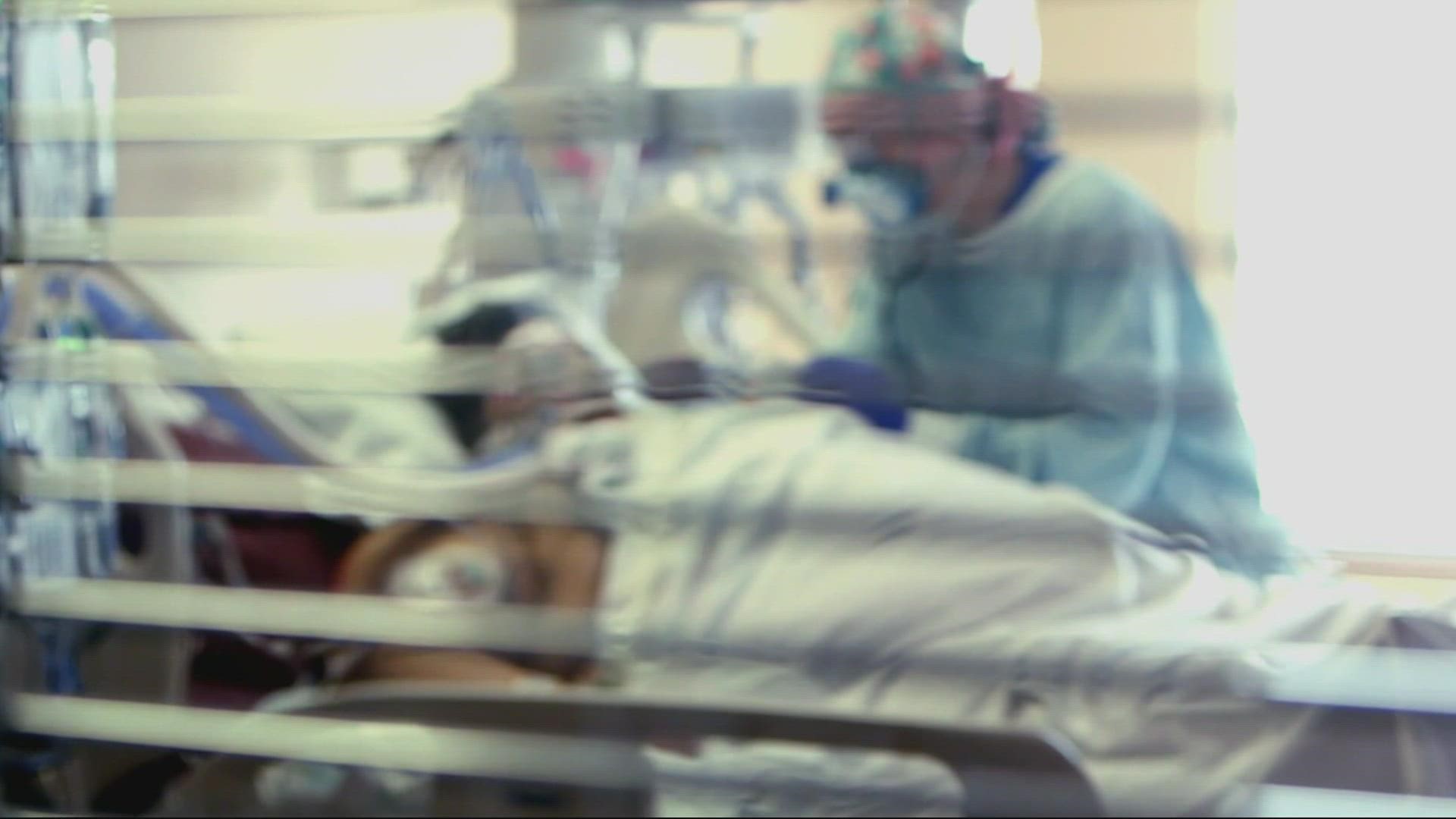PORTLAND, Ore. — Oregon's daily COVID-19 cases are surging as the omicron variant takes hold in the state, and public health officials think the worst of the wave is still on the way.
New cases in Oregon were up 25 percent for the week ending Dec. 27, according to the Oregon Health Authority, and 2,948 new cases were reported on Thursday, one of the highest single-day totals the state has ever seen.
The highest day on record was Aug. 27, when Oregon reported 3,207 cases at the height of the delta variant wave.
Washington is seeing rising case rates too, and the state set a new all-time record for single-day COVID cases at 6,140 on Dec. 24.
An Oregon Health and Science University forecast predicted that the omicron wave won't reach its peak until February, and Multnomah County Health Director Dr. Jennifer Vines said this week that the region is still in a lull between the delta and omicron peaks.
"I think that we're going to have to get very, very flexible in the weeks to come when it comes to how we think about COVID risk," she said, "Especially in light of all the services we depend on to live day in and day out that we're going to expect to continue to function as this virus makes it's way through."
The good news is that hospitalization and death rates have so far not matched the surge in case rates. COVID hospitalizations in Oregon are down 35% and deaths are down 25% in the past week.
But in order for that trend to continue, Vines said, people need to continue to get vaccinated, step up their masking habits and cut back on social visits. A full course of vaccinations, including a booster shot, is the best defense against getting very sick or dying, she said.
"All those little things that we all choose to do add up to whether or not our health systems and essential functions make it through this wave intact," she said.
What to do if you test positive
The top five symptoms of COVID-19 are a runny nose, headache, fatigue, sneezing and a sore throat. Many of those symptoms overlap with common flu and cold illnesses, which is why it's important to seek testing.
Individuals who test positive should follow guidelines from the Centers for Disease Control and Prevention and isolate at home, regardless of their vaccination status.
The infected individual and anyone else in the home should wear masks indoors at all times, according to guidance from the Washington State Department of Health, and adjust their masks or wear two masks in order to close any gaps around the edges.
People who test positive should also reach out to close recent contacts and let them know they've been exposed, and those people should also quarantine.
Individuals who are isolating at home should stay hydrated, use over-the-counter medications as needed for symptoms and make sure their indoor spaces are well-ventilated, according to the Washington DOH guidance.
Heating system fans should be set to "on" or "high" rather than "auto," and HVAC system filters should be kept fresh. Windows should also be briefly opened to let fresh air in, when possible.
Individuals should seek medical help if they develop severe symptoms such as trouble breathing, persistent chest pain or pressure, confusion or inability to wake or stay awake. Pale, gray or blue-colored skin, lips or nail beds and abnormally low pulse oximeter readings are also signs of severe illness.
The CDC recently revised its guidance from 10 days of isolation to five. Anyone with symptoms should stay home until they feel better, but individuals who are asymptomatic or whose symptoms have abated can return to work and other regular activity after five days, although the CDC guidance states they should wear a mask at all times for another five days.

